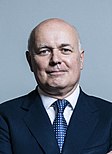UK local elections, 2002
|
|
|||||||||||||||||||||||||||||||||||||||||
|---|---|---|---|---|---|---|---|---|---|---|---|---|---|---|---|---|---|---|---|---|---|---|---|---|---|---|---|---|---|---|---|---|---|---|---|---|---|---|---|---|---|
|
|||||||||||||||||||||||||||||||||||||||||
|
All 32 London boroughs, all 36 metropolitan boroughs, 18 out of 46 unitary authorities, 88 out of 238 English districts and 7 directly elected mayors |
|||||||||||||||||||||||||||||||||||||||||
|
|||||||||||||||||||||||||||||||||||||||||
Local elections took place in many parts of England on 2 May 2002. All London borough council seats were elected as well a third of the seats on each of the Metropolitan Boroughs. Many unitary Authorities and District councils also had elections. There were no local elections in Scotland, Wales or Northern Ireland.
The Conservatives, now led by Iain Duncan-Smith, enjoyed a narrow lead over Labour in terms of votes.
In all 32 London boroughs, the whole council was up for election.
‡ New ward boundaries
All 36 English Metropolitan borough councils had one third of their seats up for election.
In six English Unitary authorities, the whole council was up for election.
‡ New ward boundaries
In 12 English Unitary authorities, one third of the council was up for election.
In 46 English district authorities, the whole council was up for election.
‡ New ward boundaries
In 42 English district authorities, one third of the council was up for election.
There were seven elections for directly elected mayors.
...
Wikipedia



